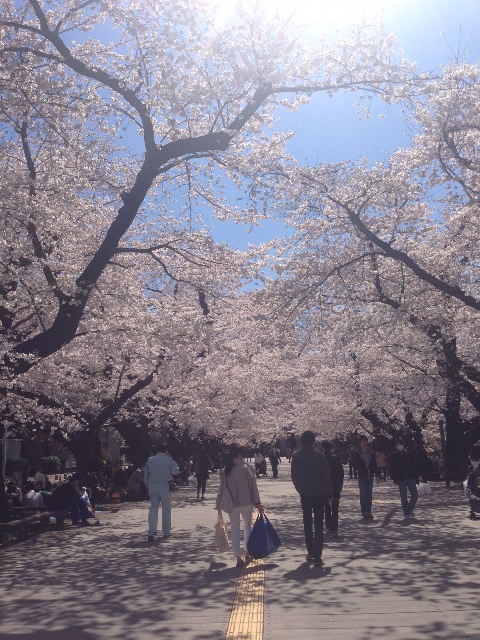A gauge of how Japanese I am
Blog No.134
Author: Soko Matsumura
Prof. Shigeru Ida invited me to Tokyo Institute of Technology for collaboration a few years ago, around the time I seriously started thinking about flying back to Japan just for cherry blossom season. He kindly offered me to visit him in March, because he remembered me whining about Sakura. Luckily for me, he also had some money left toward the end of the fiscal year. Various kinds of Sakura I saw during that visit after over 10 years left a reviving impression on me, and filled up my Japanese sensibilities again. I enjoyed Sakura-namiki (an area with a canopy of sakura blossoms) at Tokyo Tech pretty much every morning, as I walked from Ookayama station to Ishikawadai, where Ida-sensei's office was located. I have been visiting Tokyo Tech nearly annually since then, but Ida-sensei's office locations changed every time I visited him, as the Earth-Life Science Institute developed from a blueprint to actual buildings.
In December 2015, I visited Japan once again thanks to Dr. Ramon Brasser who invited me for collaboration with him and Ida-sensei. By this time, the construction of the main building of ELSI had been completed and the building turned into a futuristic terakoya-like research facility with a unique mixture of Japanese and western styles. At first I was assigned a visitor's office in the new ELSI building (ELSI-1), but since Ramon's office was back at the old ELSI building (ELSI-2), I ended up having an office there instead.
Since most researchers moved to ELSI-1 (including Ida-sensei) and since it was toward the end of the year, ELSI-2 was rather quiet while I was there. When the lights were off in the corridor due to an eco-friendly automatic setting of ELSI, the building gave me an impression of a large aquarium at night. Combined with a vibrant atmosphere at ELSI-1, it was a fantastic environment to concentrate on work, and we made a good progress during my visit there. Then, I experienced a subtle culture shock again; only at this time, I was surprised by the "Japanese culture" I had forgotten.
There are quite a few nice restaurants around ELSI, and probably thanks to university students, the quantity of food tends to be more than sufficient for a woman well beyond their adolescence. Naturally, I was always happily full and became sleepy during the afternoon. On that day, I was particularly sleepy and was too lazy to go to 7-Eleven for coffee, so I decided to use the vending machine on the ground floor of ELSI-2. A cold, December wind was blowing in as I accidentally stood in front of the vending machine that was unfortunately just by the automatic entrance door. I looked through the selections and carefully chose black coffee. As I picked up a canned coffee from the machine, I shivered at my stupidity. I had completely forgotten that there were both iced and hot coffee in Japan, and all year round. "How stupid can I be?", I said to myself, of course in Japanese, wondering how qualified I was as a Japanese person at the moment to have forgotten such an obvious cultural given. In shock, I went back to the office, picked up my coat and gloves, and walked to 7-Eleven.
In short, I feel fortunate to have these frequent homecoming visits to keep my Japanese cultural knowledge primed and intact!

